What's New
Displaying results 511 - 520 of 4913

Resource | Publications,
The General Assembly adopts the political declaration entitled “Political Declaration on HIV and AIDS: Ending Inequalities and Getting on Track to End AIDS by 2030” annexed to the present resolution.
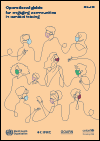
Resource | Publications,
Contact tracing is a key component of a public health response to infectious disease outbreaks. The purpose of this guidance is to reinforce the place of community engagement and participation in the contact tracing process. The guidance and related products articulate best practice principles for community engagement and how they can be operationalized as part of any community-centred contact tracing strategy. The material provided can stand on its own or be used to complement other documents that support strategies, implementation plans or training and capacity building modules.
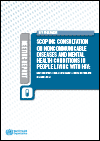
Resource | Publications,
In April 2019, WHO convened an expert scoping consultation in Geneva, Switzerland consisting of policy-makers, academics and partners from the HIV, noncommunicable diseases and mental health communities to discuss current evidence of chronic noncommunicable disease, the burden and risk among people living with HIV, review current norms and standards and ultimately to set priorities for technical areas and interventions for co-managing major non communicable diseases and mental health conditions among people living with HIV; and to inform the update of the 2016 WHO HIV consolidated guidelines on the use of antiretroviral drugs for treating and preventing HIV infection.

Resource | Publications,
The handbook follows through the different tasks which policy-makers must reflect on and undertake when bringing in people’s voice into health policy-making. Examples include creating an enabling environment for participation, ensuring good representation, strengthening capacities, increasing policy-uptake of participatory process results, and sustaining participatory engagement over time. A fundamental premise of the handbook rests on the idea that policy-makers can leverage format and design elements of a participatory process to address power dynamics amongst participants, thereby fostering more meaningful contributions to the process.
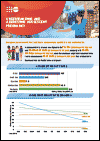
Resource | Fact Sheets,
Every year, there are over 3.7 million births to adolescent girls aged 15-19 in Asia and the Pacific. Adolescent fertility rates are now highest in the Pacific (51 births per 1,000 girls) and Southeast Asia (43 births per 1,000 girls), compared with South Asia (26 births per 1,000 girls), where there has been a significant reduction in the last two decades, and East Asia (7 births per 1,000 girls). Adolescent pregnancy has profound implications for the health and wellbeing of young people, and that of future generations. Addressing adolescent pregnancy requires a comprehensive, youth-centred, multisectoral approach to respond to the interrelated drivers of early pregnancy, and reduce associated adverse outcomes for girls and their infants. Key is the meaningful engagement of young people to understand the factors contributing to pregnancy and identify effective approaches that respond to their needs and take into account their agency.
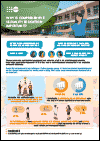
Resource | Fact Sheets,
‘My boyfriend is pressuring me to have sex, how do i say no?’
‘What is love?’
‘What does it mean if I am a girl and I find other girls attractive?’
‘What is HIV and how can I protect myself?’
These are common questions that young people are either too afraid to ask or lack the comprehensive knowledge, supportive attitudes and life skills they need to make these decisions about their lives and bodies safely and responsibly. Sexuality is a fundamental part of human life. Every young person will have to make decisions that impacts their sexual and reproductive health, and wellbeing. That is why comprehensive sexuality education is so important.
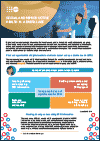
Resource | Fact Sheets,
Digital media are increasingly influencing the lives of young people. Around the world, adolescents and young people are using digital media as a platform to learn, experience, and communicate. Across Asia, and increasingly in the Pacific, young people use smartphones, tablets and computers to engage in diverse online activities, such as social networking, instant messaging/texting, and browsing websites/search engines. This connectivity creates both positive opportunities to access sexual and reproductive health information but also challenges on many fronts.
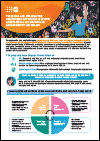
Resource | Fact Sheets,
Throughout the Asia and Pacific region, young people with diverse sexual orientation and gender identity or expression (SOGI/E) experience a high burden of poor sexual and reproductive health (SRH), including a disproportionate burden of HIV, intimate partner violence and psychological distress. This group also often experiences considerable barriers to accessing quality health services and are largely neglected by existing adolescent health, SRH, and HIV policies and strategies in the region. A multicomponent, multisectoral approach that fully engages young people with diverse SOGI/E in design, implementation and evaluation is required to address the complex determinants and multiple vulnerabilities that contribute to their poor health outcomes.
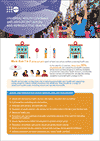
Resource | Fact Sheets,
Health services play an important role in reducing preventable poor health and supporting young people to make a healthy transition into adulthood. While many countries in Asia and the Pacific have made considerable progress towards effective coverage, and to some extent equitable coverage, of sexual and reproductive health (SRH) services, progress has not been realised for adolescents (age 10-19 years). Many national universal health coverage programmes exclude SRH services that are of particular priority and importance for adolescents. As a result, young people (age 15-24 years) continue to have a high unmet need for essential SRH services and coverage is particularly low among rural, less educated, poorer, and marginalised young people. This factsheet summarizes key recommendations to improve the inclusion of adolescents and young people in universal health coverage.
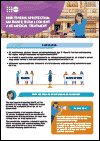
Resource | Fact Sheets,
We need to ensure a balance between protecting adolescents (age 10-19 years) from harm and respecting their agency and right to sexual and reproductive health (SRH).
This factsheet addresses the issue of ‘rights versus protection’ through (1) Laws related to age of marriage; (2) age of consent to sex; and (3) age of consent to services.These laws which are intended to protect young people also need to incorporate adolescents’ agency and context of their lives. Adolescents’ agency needs to be at the centre of efforts to develop and implement legislation that impacts their lives.





